 W
WThe 2A36 Giatsint-B is a Soviet/Russian towed 152 mm field gun which entered service in 1975. The 2A36 is designed to suppress and destroy enemy manpower and equipment. It is also suitable for counter-battery fire. The gun can be used in various weather conditions and has been tested in temperatures ranging from −50 °C to 50 °C. The gun is in use in Russia, a number of CIS countries, Finland, and Iraq. It was also used by the Lebanese Army to fire into the heavily fortified Nahr el-Bared refugee camp during the conflict there. Lebanon possibly acquired some in a major arms shipment from Iraq shortly before the end of the Lebanese Civil War.
 W
WSO-152 (СО-152) is a Soviet 152.4 mm self-propelled gun developed in 1968. It was a response to the American 155 mm M109. The development started in 1967 according to the Resolution of the Council of Ministers of the Soviet Union from July 4, 1967. In 1968 the SO-152 was completed and in 1971 entered service. Its GRAU designation is 2S3 (2С3). The fighting vehicle also received the additional designation Akatsiya (Акация), which is Russian for acacia.
 W
WThe 2S5 Giatsint-S is a Soviet/Russian 152 mm self-propelled gun. "2S5" is its GRAU designation. It is NBC protected. The 2S5 is capable of engaging targets at longer ranges and at a higher rate of fire than the more widely produced 2S3 Akatsiya 152 mm self-propelled gun, and is capable of firing nuclear projectiles.
 W
WThe 2S19 "Msta-S" is a 152.4 mm self-propelled howitzer designed by Soviet Union, which entered service in 1989 as the successor to the 2S3 Akatsiya. The vehicle is based on the T-80 tank hull, but is powered by the T-72's diesel engine.
 W
WThe 2S35 Koalitsiya-SV is a Russian self-propelled gun first seen in public in 2015 during rehearsals for the Moscow Victory Day Parade. The 2S35 is expected to supplement and eventually replace the 2S19 Msta in the Russian Ground Forces.
 W
WThe 6 inch 35 caliber naval gun 1877 was a 152 mm naval gun used by Russian Empire. The gun was used from 1887 as battleship secondary armament and cruiser armament. The gun was mostly replaced by newer 6 inch 45 caliber Canet gun 1892 by Russo-Japanese War, but was still used on some ships. During the First World War fourteen guns were used as a coastal guns on Gulf of Finland in the Peter the Great's Naval Fortress and were taken over by Finland after Finland's Declaration of Independence in 1917. The guns were used by Finland in the Second World War. Russian model year 1877 refers to rifling system, not gun adoption.
 W
WThe 6-inch siege gun model 1877 was a Russian 152.4 mm (6 in) fortress gun, siege gun and coastal defense gun. It was used in the Russo-Japanese War, World War I, and the Russian Civil War. The successor states of the Russian Empire also inherited a number of M1877 guns.
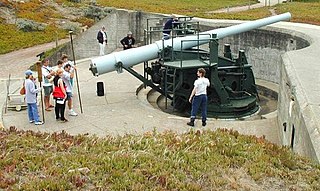 W
WThe 6-inch gun M1897 (152 mm) and its variants the M1900, M1903, M1905, M1908, and M1 were coastal artillery pieces installed to defend major American seaports between 1897 and 1945. For most of their history they were operated by the United States Army Coast Artillery Corps. They were installed on disappearing carriages or pedestal mountings, and during World War II many were remounted on shielded barbette carriages. Most of the weapons not in the Philippines were scrapped within a few years after World War II.
 W
WThe 6 inch Howitzer, Model of 1908 was the standard American heavy howitzer before World War I. Forty-two of these weapons had been produced before 1917 and all were employed within the US for training in that war. Although this weapon appears in World War I-era tables of organization and equipment, for combat use in France the Canon de 155 C mle 1917 Schneider was purchased, and remained the standard weapon of this class until early World War II. All surviving weapons were retired during the 1920s.
 W
W6-inch siege gun model 1904 was a Russian 152.4 mm heavy siege gun. It was produced by Perm Works, with a total of about 200 pieces having been built.
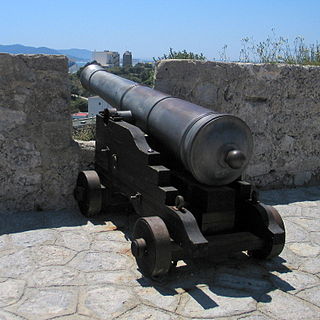 W
WThe 24-pounder long gun was a heavy calibre piece of artillery mounted on warships of the Age of sail, second only to the 36-pounder long gun. 24-pounders were in service in the navies of France, Spain, Great Britain, the Netherlands, Sweden, and the United States. They were comparable to the Canon de 24 Gribeauval used by the French Army as its largest piece of siege artillery. 24-pounders were used as main guns on the heaviest frigates of the early 19th century and on fourth-rate ships of the line, on the second deck of first-rate ships of the line, and on the second deck of a few large third-rates.
 W
W152 H 88 is the name of a series of modernized 152 mm towed heavy howitzers with 32 caliber barrels. The guns of the series share the same barrel as well as other similar qualities, but differ slightly in appearance, since they consist of three different, older (modernized) versions. The modernization was carried out by Vammas Oy from 1988 to mid-1990s. The modernization project consisted of numerous modifications to the guns, some of which had already undergone earlier smaller modifications. The most important change was the replacement of the original barrels by a Finnish-made 152 mm barrel. Also the gun carriages were subjected to various modifications. After the modernization, increased towing speeds were made possible. The breech mechanism is manually operated in all the guns. All the 152 H 88 series artillery pieces are being withdrawn from service and scrapped.
 W
WThe 152mm 45 caliber Pattern 1892 was a Russian naval gun developed in the years before the Russo-Japanese War that armed a variety of warships of the Imperial Russian Navy during the Russo-Japanese War and World War I. Guns salvaged from scrapped ships found a second life on river gunboats of the Soviet Navy during the Russian Civil War and as coastal artillery and railway artillery during World War II. In 1941 it was estimated that there were 196 guns still in use as coastal artillery. After independence in 1917 Finland was estimated to have inherited 100 guns and some remained in use until the 1980s. The last was decommissioned in 2003.
 W
W152 mm gun M1935 (Br-2) was a Soviet 152.4 mm heavy gun, produced in limited numbers by the Barrikady Plant in Stalingrad in the late 1930s. The most unusual feature of the gun was its tracked carriage, shared by a number of Soviet heavy artillery systems of the interwar period. Despite a number of drawbacks, most notably limited mobility and short service life of the barrel, the weapon was employed throughout the German-Soviet War; an upgraded variant with wheeled carriage, Br-2M, remained in service at least until the 1970s.
 W
WThe 2A65 "Msta-B" is a Soviet towed 152.4 mm howitzer. The "B" in the designation is an abbreviation for Buksiruyemaya, which means towed. This weapon has been fielded in Soviet and Russian forces since at least 1987 and is currently in service with Russian front and army level artillery units. The 2A65 howitzer, like many pieces of Soviet artillery, is capable of firing nuclear artillery shells.
 W
WThe 152 mm howitzer Model 1910 Schneider or, more properly, 6 dm polevaja gaubitsa sistemy Schneidera as it was designated in Tsarist times, was a French howitzer designed by Schneider et Cie. It was used by the Russian Empire and the Soviet Union during World War I, the Russo-Polish War and the Russian Civil War. Finland captured nine during the Finnish Civil War, but did not use them during that conflict. They did see combat during the Winter War and the Continuation War.
 W
W152-mm howitzer M1938 (M-10) was a Soviet 152.4 mm howitzer of World War II era. It was developed in 1937–1938 at the Motovilikha Mechanical Plant by a team headed by F. F. Petrov. Although production of the gun was stopped in 1941, it saw combat with the Red Army until the end of World War II and remained in service until the 1950s. Captured pieces were used by Wehrmacht and the Finnish Army. The latter kept the M-10 in service until 2000.
 W
WThe D-1 howitzer M1943 is a Soviet World War II-era 152.4 mm howitzer. The gun was developed by the design bureau headed by F. F. Petrov in 1942 and 1943, based on the carriage of the 122 mm howitzer M1938 (M-30) and using the barrel of the 152 mm howitzer M1938 (M-10). The powerful and mobile D-1, with its wide range of ammunition, significantly increased the firepower and breakthrough abilities of Red Army tank and motor rifle formations. Several hundred D-1s were manufactured before the end of World War II.
 W
WThe 152 mm howitzer-gun M1937 (ML-20), is a Soviet heavy gun-howitzer. The gun was developed by the design bureau of the plant no 172, headed by F. F. Petrov, as a deep upgrade of the 152-mm gun M1910/34, in turn based on the 152-mm siege gun M1910, a pre-World War I design by Schneider. It was in production from 1937 to 1946. The ML-20 saw action in World War II, mainly as a corps / army level artillery piece of the Soviet Army. Captured guns were employed by Wehrmacht and the Finnish Army. Post World War II, the ML-20 saw combat in numerous conflicts during the mid to late twentieth century.
 W
W152 mm mortar M1931 (NM) was a 152.4 mm (6 inch) artillery piece originally developed by the German arms manufacturer Rheinmetall. The gun was produced in limited numbers in the Soviet Union and saw action with the Soviet Army in World War II. A modified version of the design was also adopted in Germany, as 15 cm sIG 33.
 W
WThe 152 mm siege gun model 1910 was a heavy gun used by the Russian Army in World War I. The gun was designed by the French arms manufacturer Schneider and the first prototype was evaluated in Russia in 1909-10. A total of 73 guns were ordered from the Putilov Plant in 1912. However, only 51 guns were delivered by the end of the Civil War. A further 49 guns were ordered by the Red Army Artillery Administration in 1926 and 1928. All usable guns were upgraded to 152 mm gun M1910/30 in the early 1930s.
 W
WThe 152 mm gun-howitzer M1955, also known as the D-20, is a manually loaded, towed 152 mm artillery piece, manufactured in the Soviet Union during the 1950s. It was first observed by the west in 1955, at which time it was designated the M1955. Its GRAU index is 52-P-546.
 W
WThe DANA is a wheeled self-propelled artillery piece. It is also known as the Samohybná Kanónová Húfnica vzor 77 ; and was designed by Konštrukta Trenčín and built by ZTS Dubnica nad Váhom in the former Czechoslovakia. Introduced in the 1970s it was the first wheeled 152 mm self-propelled artillery gun to enter service. It is based on a modified 8x8 Tatra 815 chassis with excellent cross-country mobility. Currently it is in service with the Czech Republic, Libya, Poland, Georgia, Azerbaijan, and Slovakia.
 W
WThe Ordnance BL 6 inch 26cwt howitzer was a British howitzer used during World War I and World War II. The qualifier "26cwt" refers to the weight of the barrel and breech together which weighed 26 long hundredweight (1.3 t).
 W
WThe Ordnance BL 6 inch 30cwt howitzer was a British medium howitzer used in the Second Boer War and early in World War I. The qualifier "30cwt" refers to the weight of the barrel and breech together which weighed 30 hundredweight (cwt) : 30 × 112 lb = 3,360 lb. It can be identified by the slightly flared shape of the muzzle and large recuperator springs below the barrel.
 W
WThe BL 6 inch gun Mk V was an early Elswick Ordnance Company breech-loading naval gun originally designed to use the old gunpowder propellants. They were used for coast defence around the British Empire.
 W
WThe BL 6-inch 80-pounder gun Mk I was the first generation of British 6-inch breechloading naval gun after it switched from muzzle-loaders in 1880. They were originally designed to use the old gunpowder propellants.
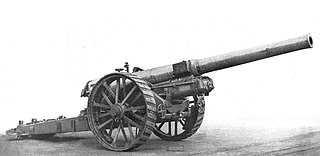 W
WThe British BL 6-inch gun Mk XIX was introduced in 1916 as a lighter and longer-range field gun replacement for the obsolescent BL 6-inch gun Mk VII.
The BL 6-inch gun Marks II, III, IV and VI were the second and subsequent generations of British 6-inch rifled breechloading naval guns, designed by the Royal Gun Factory in the 1880s following the first 6-inch breechloader, the relatively unsuccessful BL 6-inch 80-pounder gun designed by Elswick Ordnance. They were originally designed to use the old gunpowder propellants but from the mid-1890s onwards were adapted to use the new cordite propellant. They were superseded on new warships by the QF 6-inch gun from 1891.
 W
WThe BL 6-inch gun Mark VII was a British naval gun dating from 1899, which was mounted on a heavy traveling carriage in 1915 for British Army service to become one of the main heavy field guns in the First World War, and also served as one of the main coast defence guns throughout the British Empire until the 1950s.
 W
WThe BL 6-inch Mark XI naval gun was a British 50 calibres high-velocity naval gun which was mounted as primary armament on cruisers and secondary armament on pre-dreadnought battleships from 1906 onwards.
 W
WThe BL 6-inch Mark XII naval gun was a British 45 calibre naval gun which was mounted as primary armament on light cruisers and secondary armament on dreadnought battleships commissioned in the period 1914–1926, and remained in service on many warships until the end of World War II.
 W
WThe BL 6-inch Mk XXII gun was a British high-velocity 6-inch 50-calibre wire-wound naval guns deployed on the Nelson-class battleships from the 1920s to 1945.
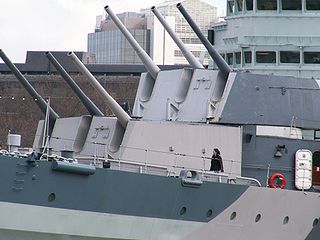 W
WThe 50 calibre BL 6 inch gun Mark XXIII was the main battery gun used on the Royal Navy and British Commonwealth's conventional (non-anti-aircraft) light cruisers built from 1930 through the Second World War, and passed into service with several other navies when ships were disposed of after the end of the War.
 W
WGun howitzer NORA is a Yugoslav and Serbian 152mm and 155mm gun-howitzer developed by the Military Technical Institute (MTI) for the Yugoslav People's Army, Serbian army, and export. Gun-howitzer NORA has few basic version M-84, M-84B1 and M-84B2 and they are usually towed by FAP 2026 BS/AV truck.
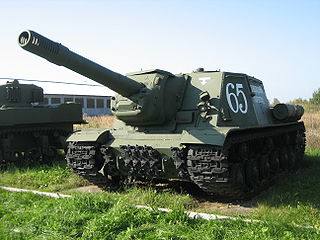 W
WThe ISU-152 is a Soviet self-propelled gun developed and used during World War II. It was unofficially nicknamed zveroboy in response to several large German tanks and guns coming into service, including Tigers and Panthers. Since the ISU-152's gun was mounted in a casemate, aiming it was awkward, and had to be done by repositioning the entire vehicle using the tracks. Therefore, it was used as mobile artillery to support more mobile infantry and armor attacks. It continued service into the 1970s and was used in several campaigns and countries.
 W
WThe Newton 6-inch mortar was the standard British medium mortar in World War I from early 1917 onwards.
 W
WThe QF 6-inch 40 calibre naval gun (Quick-Firing) was used by many United Kingdom-built warships around the end of the 19th century and the start of the 20th century.
 W
WThe QF 6-inch Gun Mark N5 was a British naval gun, which was developed in the post-war period. It was the last large gun to be operational with the Royal Navy.
 W
WThe SU-14 was a prototype Soviet heavy self-propelled gun built on a T-35 chassis. The original prototype mounted a 152 mm gun M1935 (Br-2); the SU-14-1 variant of 1936 carried a 203 mm gun B-4 which could fire 48.9 kilogram shells at ranges up to 25 km. Its armour was 20 to 50 mm thick. It never entered serial production.
 W
WThe SU-152 is a Soviet self-propelled heavy howitzer used during World War II.
 W
WThe SU-152G is a Soviet experimental 152-mm self-propelled howitzer, and is designed by OKB-3 of the heavy machine construction division of Uralmash. The main designer of the SU-152G is Lev Gorlitsky. The SU-152G was intended to suppress and destroy enemy firing positions, engage armored hostiles as well as area denial, in addition to conducting counter-battery tasks.
 W
WThe QF 6-inch 40 calibre naval gun (Quick-Firing) was used by many United Kingdom-built warships around the end of the 19th century and the start of the 20th century.